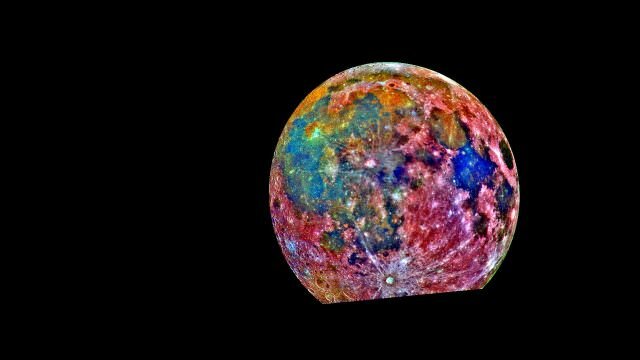Last updated February 8, 2018 at 10:41 am
Astronomers have created a topographic map of the surface of Saturn’s moon Titan using the now-complete data set from NASA’s Cassini mission.
The Titan lake known as Ligeia Mare, shown here in a false-colour image from NASA’s Cassini mission, is the second largest known body of liquid on Saturn’s moon Titan. Credit: JPL
The map of Titan, and what we can learn from it, is described in two recent papers published in Geophysical Review Letters.
It shows several new features on Titan, including new low mountains, each less than 700 metres high, and two depressions in the moon’s equatorial region that scientists believe are either ancient, dried seas or the remains of flows from ancient volcanoes.
Titan is also a little flatter at the poles – the technical term is “oblate” – than previously thought, suggesting its crust varies in thickness.
Titan’s seas have a common sea level
The other major discovery is that the seas on the moon, which are made of up liquid hydrocarbonous such as such as ethane and methane, have a common level, similar to sea-level of oceans on Earth.
This suggest that the lakes communicate beneath the moon’s surface.
Senior author of one of the papers, Alex Hayes, assistant professor of astronomy at Cornell University, marvels at the unparalleled detail the data has delivered.
Further reading: Alan Duffy says ‘Thank you, Cassini’
“We’re measuring the elevation of a liquid surface on another body 10 astronomical units away from the Sun to an accuracy of roughly 40 centimetres,” he says in a Cornell media release.
“Because we have such amazing accuracy we were able to see that between these two seas the elevation varied smoothly about 11 metres, relative to the centre of mass of Titan, consistent with the expected change in the gravitational potential.”
Hayes believes the data prove his earlier hypothesis that Titan’s lakes communicate with each other through the subsurface.
He and his team measured the elevation of lakes filled with liquid as well as those that are now dry.
“We don’t see any empty lakes that are below the local filled lakes because, if they did go below that level, they would be filled themselves,” Hayes says.
“This suggests that there’s flow in the subsurface and that they are communicating with each other,” said Hayes. “It’s also telling us that there is liquid hydrocarbon stored on the subsurface of Titan.”
Stereographic polar projections of Titan’s topography with the South Pole left and the North Pole right, top, while the image below shows a global equicylindrical projection. Credit: Cornell University
But the new map contains a mystery as well – how the lakes were formed in the first place. Hayes notes that they sit in sharp-edged depressions – “literally look like you took a cookie cutter and cut out holes in Titan’s surface”.
How Titan’s lakes formed is still a mystery
This, along with the absence of inflow or outflow channels, suggests to scientists that they have formed by the collapse of the surface forming holes in the ground, similar to the way the Florida Everglades were formed.
But that does not explain why, on Titan, these lakes have sharp, raised rims. This indicates a process called uniform scarp retreat, where the borders of the lakes are expanding.
“But if these things do grow outward, does that mean you’re destroying and recreating the rims all the time and that the rims are moving outward with it? Understanding these things is in my opinion the lynchpin to understanding the evolution of the polar basins on Titan,” said Hayes.
It took about a year to create the map, says Paul Corlies, a doctoral student at Cornell and first author of the second of the papers.
“The main point of the work was to create a map for use by the scientific community,” he said.
The map combines data from multiple sources, with some 9 per cent high resolution topography, 25-30 per cent lower resolution and the remainder comprised of an interpolation algorithm.
NASA’s Cassini mission ended on 15 September last when it plunged into Saturn after almost 20 years in space.
You can access the two papers here and here.
Related content:
Winter arrives with a vengeance on Saturn’s moon Titan
Goodbye Cassini
Follow us on Facebook, Twitter and Instagram to get all the latest science.































































































































































































































































